Introduction to Design Futures Archeology – ‘Defarch’
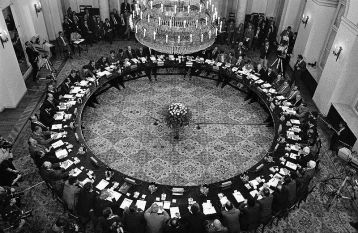
Our technologically mediated existence is threatening the very democratic process itself. We need to develop a new language, a new literacy, in order to both understand our brave new world, and learn how to live a meaningful existence in it (Dakers, 2006, p.1).
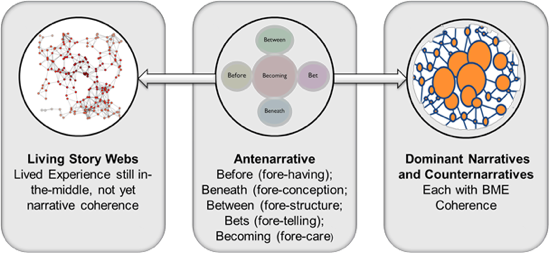
-
Defarch is short for Design Futures Archaeology, an approach seen as the study of, and study with, policy makers, designers and citizen-users of both the material and immaterial, as they seek to project contexts into a future, their shared future, and then task themselves to reflect upon how and why they got there in the first place, and even what they have already?
- First principles thinking is one of the best ways to reverse-engineer complicated situations and unleash creative possibility. What is it they actually have in ‘the first place’ before it is described and inscribed, before it is replaced due to perceived obsolescence or some other logic? Learning to the play the guitar is demanding technology and requires effort, as is making a frying pan, a programming language, or keeping your teeth clean. So-called convenience technologies, in contrast – like instant mashed potatoes or automatic transmissions – usually require little concentrated effort and yield much more predictable results. we are concerned with mental models, decision making, learning, reading, and the art of living.
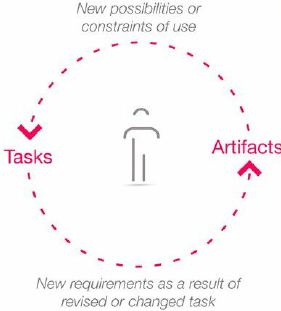 It has been the case that neither innovators or consumer-user’s know entirely what it is they have in their midst when they look at or look into, and use technology. This is largely due to shifting….
It has been the case that neither innovators or consumer-user’s know entirely what it is they have in their midst when they look at or look into, and use technology. This is largely due to shifting….- contexts of use. What is value pitted against the experience? What is value against what is called consumption of services? Partly these question are asked, or rather often not asked due to a blinkering of vision, the blinkering of purpose, as those that provide things for us to use and consume jostle in their environments towards an end of making profit, or otherwise uplift society, In the CEO mega compensation game, peer comparisons play a central role. we users on the others hand struggle to locate novelty through use and convenience, and hopefully delight and surprise in their everyday life, even if this is just to show off the latest mobile phone.
- Also This was the prospect or possibly space for the world wide web as it became commercialized in the mid 1990s, and as more sophisticated mobile devices have diffused world wide, the possibility space is back firmly in the human court now. but it is all interaction affects, what happens when the guy giving you your Uber lift, or the guy sweeping the streets is a genius in soft synthesisers, music and sound making devices which can be downloaded for free on github?

-
FANG the popular acronym for Facebook, Amazon, Netflix and Google – and the Chinese BAT: Baidu, Alibaba and Tencent. is the latest effort to aggregate The new discipline understanding these companies and the data ecosystem [and delivery/logistics ecosystem in the case of Amazon] they operate in and how they have managed to amass so much influence. Amazon is spending $4.5 billion on original TV content this year, [they are] No. 2 to Netflix in spending, and the only reason Netflix…increased their budget to $6 billion is because they heard Amazon’s footsteps behind them. Important to state that Netflix nor Amazon nor Apple invented the manner in which we view stories. The act of decoding and making sense of film, the key user skill, has little changed regardless of mode of delivery, choice and availability of options, and sophistication of production values. this has nothing to do with algorithms or A.I. help systems and helpers who seem human and so forth.
The participation of consumer-users at all stages of development processes, cradle to cradle, the various levels and hierarchies of people initiating and enacting and enforcing policies, are they really familiar with local contingencies? Do they have enough knowledge to build configurations.
-
As Fleck indicated using the case of industrial robots, and computer controlled manufacturing systems: “User knowledge, job design, and human factors are not adjuncts, but essential inputs to the innovation process, helping to crystallize contingencies into novel artifacts.” Participatory design was not simply a nouveau method or the latest management fad, or even yet another manifestation of the democratic zeitgeist, it was completely necessary. John Dewey, the American philosopher and psychologist, said “We do not learn from experience. We learn from reflecting on experience.” ‘Hansei’ (反省) People learn about situations by acting in them and then seeing what happens (Weick, 1985).
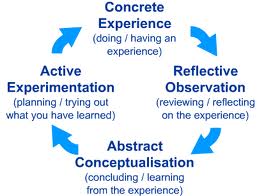
Kolb’s (1984) experiential learning model
-
Since behaviorism and cybernetics and closed loops we’ve had “performance-focused iterative models for change”. While these ideas can promote cyclic models of expansive change they can also support blinkered path-dependencies, where a trail of sweet tasting sugar, i.e. profits, or computer game addiction can lead us up the right or wrong path depending upon what your stated goal is. We make ourselves into what we, as a species, will become, mainly through our choices as consumers. Imagine you want to win $1000 on online poker. You start on the 10c table and keep winning, you move to the $1 table and keep winning over time. And again you move through the $10 tables, eventually you win or lose on the $100 tables and make you target. The feedback is good, positive, but the reality is that you can win or lose as you could have at any other level. Positive feedback amplifies system output, resulting in growth or decline. It is a game however that needs the risk in order to play. A run on a bank can bring it down on its knees in a very short time period and it can spread (systemic risk) to other banks.Many in the industry have gotten too comfortable with change initiatives. Innovators like Alan Kay and Steve Jobs are celebrated for making previously daunting technologies usable by anyone. Negative feedback dampers output, stabilizes the system around an equilibrium point. This is more like shampoo manufacturers who just want to ship volumes of what is essentially the same product.
What is important and what ties technologies and services together is of course their consumption and use. This was the main idea behind contextual usability (Nicoll, 1993, 1998, 2001). Rather than establishing a purely functional orientation in the study of the relation of people to devices and services, it aimed to establish outcomes arising from particular use instances.
-

Contextual usability quadrant showing how perceptions of the use process drive the uptake of of features and functions
-
Children often learn the rules in a family by pushing boundaries and then looking for the point at which they get reprimanded. Ants periodically break from the main path and begin a random search process again. The ants are programmed to strike a balance between exploiting a known food source and exploring for the next food source. The ants are hard-wired to seek diversity. Doctors sometimes learn what is wrong with a patient by starting a treatment and seeing how the patient responds. The essential difference between a human and a machine is that it asks the learner thought-provoking questions, which promote critical and innovative thinking – nudges them towards the answer. And those questions change the way the learners think about whatever it is that the coaching guide is focusing on. And by adjusting their mental models, learners then change their behavior accordingly. Why does putting our own data in front of us somehow compel us to act? In part, it’s that feedback taps into something core to the human experience, even to our biological origins.
Like any organism, humans are self-regulating creatures, with a multitude of systems working to achieve homeostasis. Evolution itself, after all, is a feedback loop, albeit one so elongated as to be imperceptible by an individual. Feedback loops are how we learn, whether we call it trial and error or course correction. Almost everyone can anticipate the immediate results of their actions. This type of first-order thinking is easy and safe but it’s also a way to ensure you get the same results that everyone else gets. Second-order thinking is thinking farther ahead and thinking holistically. It requires us to not only consider our actions and their immediate consequences, but the subsequent effects of those actions as well. Failing to consider the second and third order effects can unleash disaster.
How can you employ introspection upon that which has not yet taken place or already unfolding? We do that now when we take on lineages of technological and social developments for granted, and even our own everyday lives and its contexts. The easy to comprehend history of how things went from ‘here’ to ‘where [we are today]’ conveniently obfuscate the complexities and minutiae to what really happened. Small stimulus – big effect – butterflies causing hurricanes in Kansas.
This is at the core of Defach as an idea, or framework. The key here is to work with others to observe what is going on, to tap different data sources and collect different types of data, and to keep prior biases from interfering with your perceptions. (i.e. repeat a lie enough times and it becomes fact). As machine learning and big data take the work out the nuts and bolts of quantitative analysis, the brutish ‘number crunching’ and muscle of the computer, its forte remember. Probabilistic thinking is essentially trying to estimate, using some tools of math and logic, the likelihood of any specific outcome coming to pass. It is one of the best tools we have to improve the accuracy of our decisions. As the elucidation of ever finer weaves of patterns and ever more complicated Jacquard looms and analytical engines and even better graphics, voice operated ‘helpers’ and virtual realities. All we are left with is that pesky residual task of ‘making sense‘. The great and prevailing anxiety of this time is that we end up making sense of the wrong things, we manufacture nonsense, we distal from the data the wrong patterns, the wrong interpretation and conclusions, the wrong reportage, we failed to see why and when and where we got it wrong. Sometimes its the manner in which it is presented.

In English, the caption reads: “Kuniit’s three wooden (tree) maps show the journey from Sermiligaaq to Kangertittivatsiaq. Map to the right shows the islands along the coast, while the map in the middle shows the mainland and is read from one side of the block around to the other. Map to the left shows the peninsula between the fjords Sermiligaaq and Kangertivartikajik.” From “Topografisk Atlas Grønland”, published by Det Kongeglige Danske Geografiske Selskab, 2000 (pg 171).
Historiography only goes back a few thousand years, and the oldest human writing systems, such as cuneiform script, are just 5000 years old. Not only the languages, but other aspects of cultures change as well: if Sumerian writers had left us a warning about a very real, but invisible danger such as radiation or pollution, global warming, it could be surmised that the few experts who can read their cuneiform script might misunderstand them as eschatological texts or mere myths. A map can also be a snapshot of a point in time, representing something that no longer exists. A huge shift from a ‘resource extraction’ mentality to learning ‘how to notice, share and harvest’ can suggest unforeseen combinations of data, things, experiences and meanings. This more comprehensive approach would foster a ‘diversity-of-diversities’ to unlock hitherto unimaginable opportunities and alternative realities. But within ‘unimaginable opportunities’ beyond its ebullient tone, there is a realm which relates to the darker side, that which is neither ours or anyone else’s. We nor our betters, those who can exercise power, choice and discretion, those who influence, celebrity, those who offer us the menu choices and look of the day.
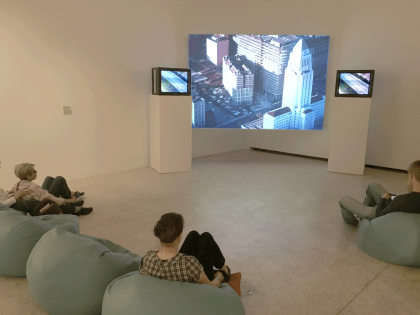
At the International Conference on the History of Computing held in Los Alamos in 1976, R. W. Hamming placed his proposed agenda in the title of his paper: “We Would Know What They Thought When They Did It. “, He pleaded for a history of computing that pursued the contextual development of ideas, rather than merely listing names, dates, and places of “firsts”. Moreover, he exhorted historians to go beyond the documents to “informed speculation” about the results of undocumented practice. What people actually did and what they thought they were doing may well not be accurately reflected in what they wrote and what they said they were thinking (Mahoney, 1990). This does not stop us applying our 21st century gloss to the past. Isn’t all life and living in the 18th Century, in our mind’s eye, a comfortable one, a Jane Austen’s existence rather than a Robinson Crusoe? Or how about the typical farming worker whose diet was porridge three time a day, everyday, forever…
Known to self Not known to self Known to others OPEN The common and shared knowledge regarding a product or service, or scientific ‘fact’ – public perceptions of characteristics, functions, uses, utility, features, how to fix common faults, how to hack, universal, plug and play. The collective consciousness. Common sense.
BLIND Knowledge that other may know – i.e. experts or practitioners – but you do not know – how to build devices, what goes wrong with them, how to produce and distribute, skills how to solder, write Ruby, Java, etc., data. Collective unconscious.
Not known to others UNKNOWN Personal things that you attribute to the product or service that is individual or idiosyncratic – your own particular usage patterns and choices – quantitative and qualitative – user data, system logging, surveys, focus groups ethnography, your private data, your undisclosed secrets. individual motivations, drivers.
HIDDEN Knowledge regarding use and consumption that neither you nor anyone else knows about – unknown, the gaps in-between, interaction effects, black swans, unintended consequences, broken futures (what I call broken pots). The person with the fewest blind spots wins. It’s like being at a poker table where you can see everyone else’s cards. The void.
When ego and not competence drives what we undertake, we have blind spots. If you know what you understand, you know where you have an edge over others. When you are honest about where your knowledge is lacking you know where you are vulnerable and where you can improve. Understanding your circle of competence improves decision making and outcomes. It may change depending upon your relation to the technology or service. in these cases alignment (i.e. Molina, 2003) may be the main prerogative for successful projects.
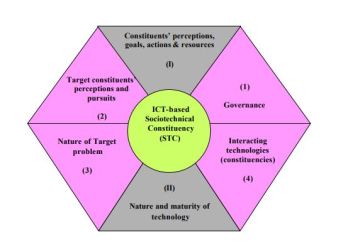
The basic ‘diamond of alignment’ shema which attempts to highlight how the nature and maturity of the technology sits alongside other constituencies to produce the relationships which emerge – Molina (2003)
-
Sensemaking involves—and indeed requires—an articulation of the unknown, because, sometimes trying to explain ‘unknown’ is the only way to know how much you understand it.the Sensemaking, a term introduced by Karl Weick, refers to how we structure the unknown so as to be able to act in it. Sensemaking involves coming up with a plausible understanding—a map—of a shifting dynamic world; testing this map with others through data collection, action, and conversation; and then refining, or abandoning, the map depending on how credible it is. Sensemaking in such an environment involves “being thrown into an ongoing, unknowable, unpredictable streaming of experience in search of answers to the question, ‘What’s the story?’” (Weick, Sutcliffe, & Obstfeld, 2005). Maps can provide hope, confidence, and the means to move from paralysing anxiety to action. As Thoreau wrote, “It’s not what you look at that matters, it’s what you see.” This is a metaphor that is applicable to just about every area of our life when we stop and consider it. However, it takes time to build. But real time analytics is changing this. . Three-quarters of leaders are pushing for more digital and customer-centered business and operating models that focus on delivering value at speed through organizational agility. The four capabilities we need include sensemaking, relating, visioning, and inventing (Ancona, Malone, Orlikowski, & Senge, 2007).
Sometimes it’s easy to become stale, bored, jaded or short sighted in how we see our lives, our relationships, our physical bodies, our jobs, the home in which we live, the community in which we live, the country in which we live and even the car we drive. When we start taking these things for granted because we are so near to them, we fail to see the precious role they play in the big picture of our daily lives. At those times, it may be tempting to seek new landscapes, that is, to look elsewhere for our inspiration, fulfillment and contentment. Perhaps what we need is not a new relationship, job, home, community or car. Its all about mindsets and attitudes. Perhaps what is need is a new perspective, to see what lies before us with new eyes. “The real voyage of discovery consists not in seeking new landscapes but in having new eyes.” — Marcel Proust
“There is an immense amount to be learned simply by tinkering with things. It is not possible to learn from books how everything is made –and a real mechanic ought to know how nearly everything is made. Machines are to a mechanic what books are to a writer. He gets ideas from them, and if he has any brains he will apply those ideas.” Henry Ford recognised that having to learn things by doing, or struggling making material objects or components fit, playing music, copying things and then realising the weaknesses in their affordances gave rise to opportunities. Industrial Robots did not enter into factories fully formed and fit for purpose, instead there had to be considerable tweaking, and innovation which could only happen on site, en situ.
As a practice
Galloway and Ward note in a piece on locative media note that: “In archaeology – as with locative media – nothing is considered more important than context.” They explain this further in that “Contextual information is valued so highly in archaeological interpretation that excavation of a site is never total because it is understood that excavation is a destructive process and care must be taken to preserve some parts “intact” for future study (and other methods).” That dark area which is not illuminated can emerge as the ‘Black Swan‘ which killed the product or organization – it is the knowledge that either prevents or shapes nuclear powered vacuum cleaners or any other technology, social and economic predictions. But this does not change the fact that organisations, products and services stop “... looking at a 10-50 year time scale there is a degree of crystal ball gazing needed but if fully backed up with the best available evidence then this is as good as one can expect.“
This is a future in which today’s objects, devices and artefacts come to be situated by others, end users and consumers, which were once known as pullers, as well as designers and marketers, which were once known as pushers. Scenarios are not new they have formed the stuff of article features for some time, they seed both new kinds of products and services and the very core notion of ‘futures’ in the wider public mind. And within that public is of course those visionary entrepreneurs and designers, even those makers and tinkerers and hobbyists who start to making it happen. Can we not say that 2001: A space Odyssey gave rise to the i-PAD?
“Yesterday is history, tomorrow is a mystery, and today – today is a gift. That’s why we call it the present.” – Babatunde Olatunji, Nigerian drummer and social activist.“ It is change, continuing change, inevitable change, that is the dominant factor in society today. No sensible decision can be made any longer without taking into account not only the world as it is, but the world as it will be. ” Isaac Asimov 1920 – 1992The objective of the taught programme is to prepare students who may already have design (architecture, graphics, product, fashion, multimedia), engineering (civil, software, industrial) or business knowledge, to perform effectively and efficiently as corporate and governmental design consultants, design managers, design researchers or design teachers. They will be prepared to address the issues and exigencies of contemporary and future global society addressing the significant challenges and opportunities which they pose.






4 Comments
Jump to comment form | comment rss [?] | trackback uri [?]